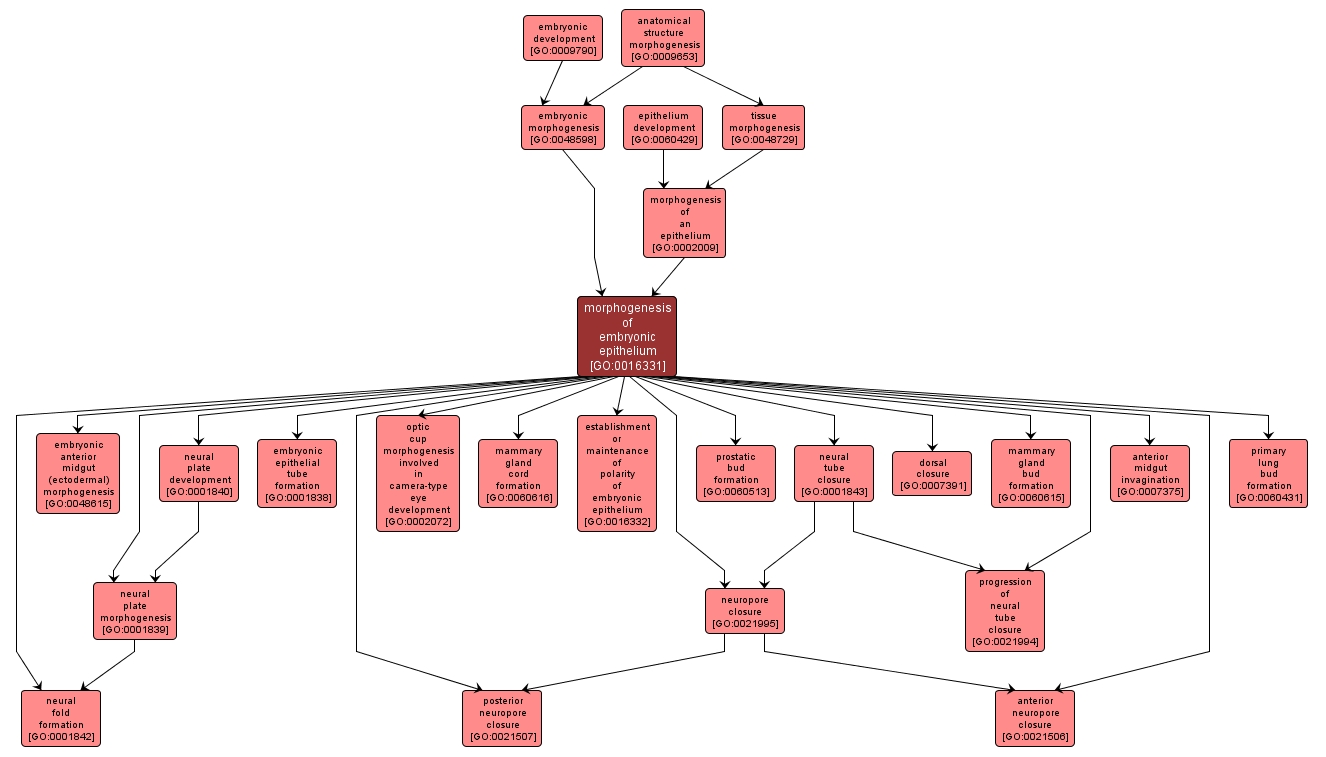GO TERM SUMMARY
|
| Name: |
morphogenesis of embryonic epithelium |
| Acc: |
GO:0016331 |
| Aspect: |
Biological Process |
| Desc: |
The process by which the anatomical structures of embryonic epithelia are generated and organized. Morphogenesis pertains to the creation of form. |
|

|
INTERACTIVE GO GRAPH
|














